Yangcheng and the Inn of Eight Happinesses (cont.) |
(Note: I often receive requests to use these photos in giving talks, lectures, etc. I am happy for people to use them provided that acknowledgement of their source, and if possible a link to this page, is given.)
On the previous page we looked at the town of Yangcheng and traces of the era when Gladys Aylward lived there. On this page we will see how successful I was in finding the Inn of Eight Happinesses.
The Inn of Eight Happinesses
When Gladys Aylward first arrived in Yangcheng she came to the East Gate, and it was near this gate that she met Jeannie Lawson in a courtyard off a narrow roadway. That was where Jeannie had rented a house quite cheaply because it was supposed to be haunted.
The premises were square, like most Chinese dwellings, enclosed by four high walls. As Burgess describes it:
From a square recess in the front wall, a small door led inwards to a large courtyard. The rooms of the double-storey dwelling opened on to balconies which looked down on to the courtyard. This house was almost derelict. Practically every door was off its hinges; there were piles of rubble on the flagstones, gaping holes in the tiled roof, dirt everywhere.
It was later decided that this premises should be operated as an inn. As Jeannie tells Gladys:
Our house was built as an inn in the first place, hundreds of years ago. We've plenty of rooms. There are three k'angs specially constructed to sleep large numbers, two downstairs, one in the large room upstairs.
The size of the house was such that Jeannie was confident of putting up at least fifty men and their animals.
If I was to find the Inn of the Eight Happinesses (八福客栈 bāfú kèzhàn), the East Gate was an obvious starting place. But where to look? I wandered aimlessly around the area for a while but quickly decided that there was no way in that warren of streets (for a sample, see below) that I would be able to find, let alone identify, an old building that had originally been used as an inn by a few Christian missionaries.
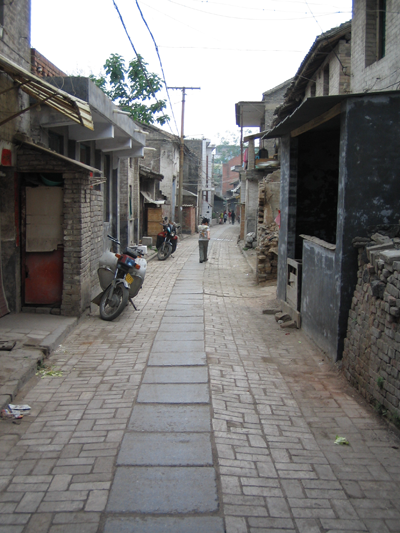
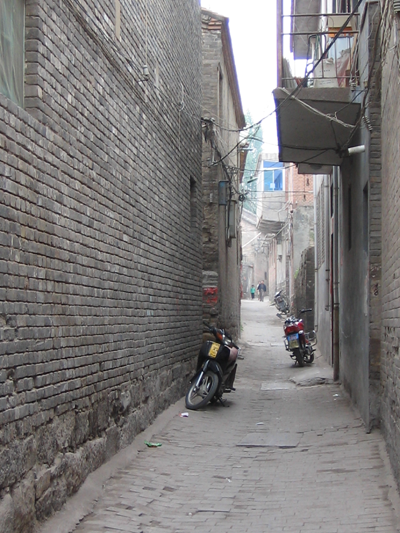
A street and an alley in the vicinity of the East Gate. Not much chance of stumbling across the Inn of Eight Happinesses in this jungle!
It was only when I stopped to ask the locals that I started to make some progress in my search. Below are some of the wonderful people who eventually helped me find the Inn of Eight Happinesses.
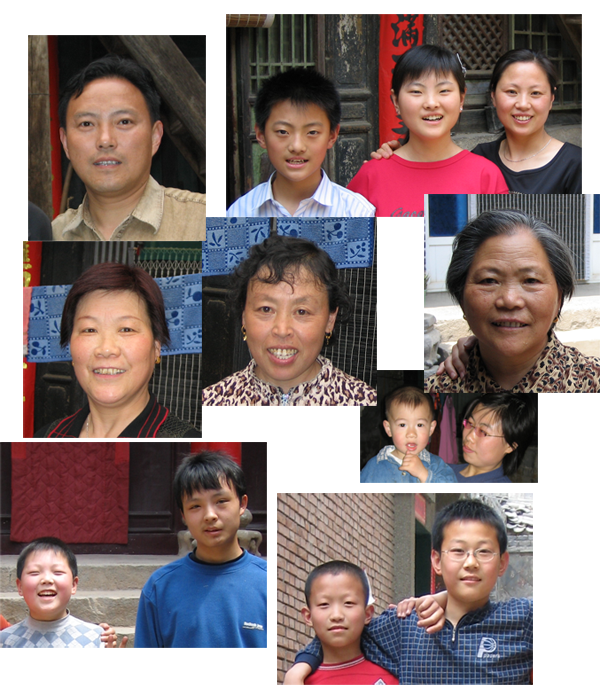
The people who helped me find the 'Inn of the Eight Happinesses'.
It took a while and one false alarm, but eventually some of the children were assigned to take me to a courtyard now known as 'the old Jesus hall courtyard' (旧耶稣堂院 jiù Yèsù-táng yuàn). This was indeed the actual Inn of the Eight Happinesses, still there after many years. And this is how it looked:
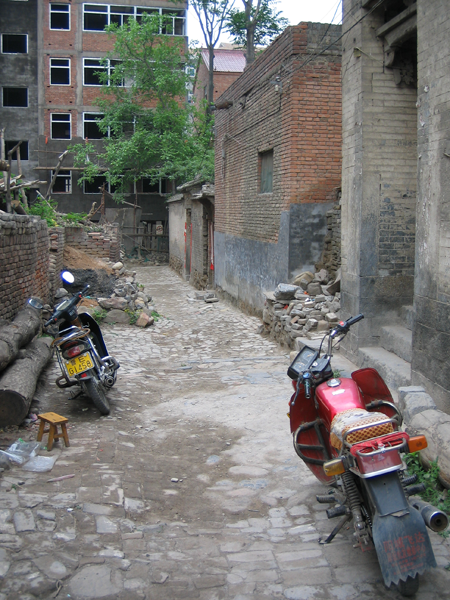
The alley in which the inn is located. The inn entrance is the door on the right.
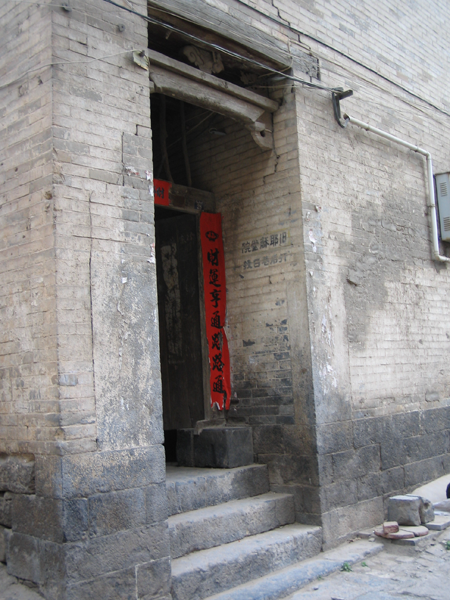
The entrance, taken from the other direction
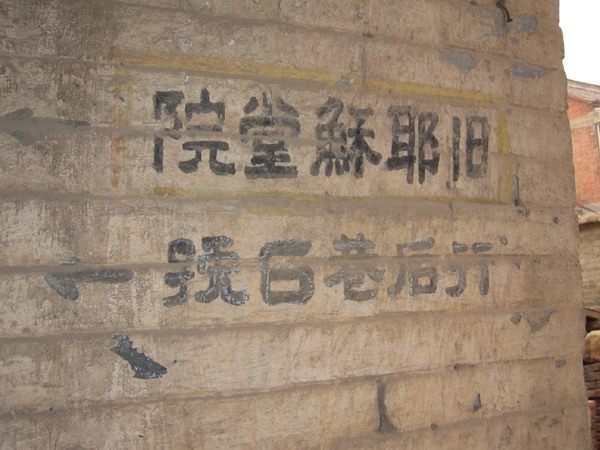
The sign at the entrance, 旧耶稣堂院 (jiù Yèsù-táng yuàn, 'the old Jesus hall courtyard'), with its address at 行后巷6号.
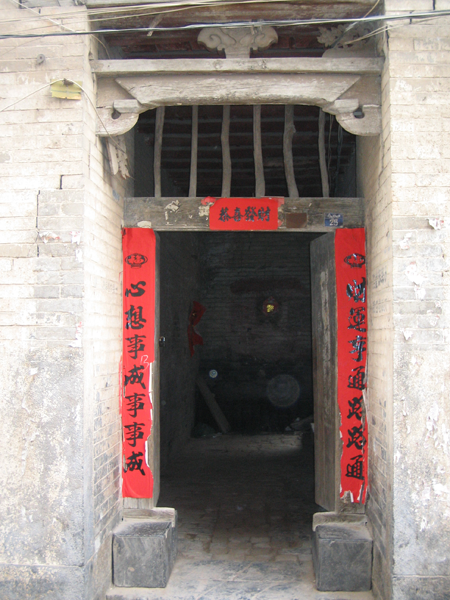
A direct view into the inn entrance. This is the entrance through which Gladys physically dragged the head mule in order to get customers. It must have been quite a feat given the stairs that can be seen in the preceding photo. (Or maybe stairs like that are no obstacle to a hungry mule.)
The following photos are shots inside the courtyard itself, which showed plenty of signs of human habitation. Since people were living there, it was rather difficult to look in and see how many k'angs there were, and whether it would really be possible to put up 50 people (not to mention their mules).
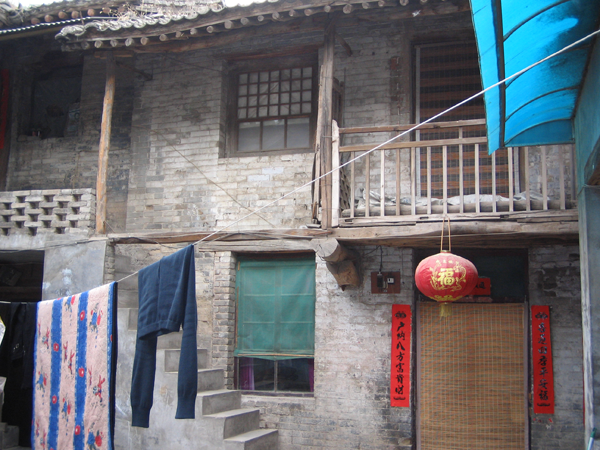
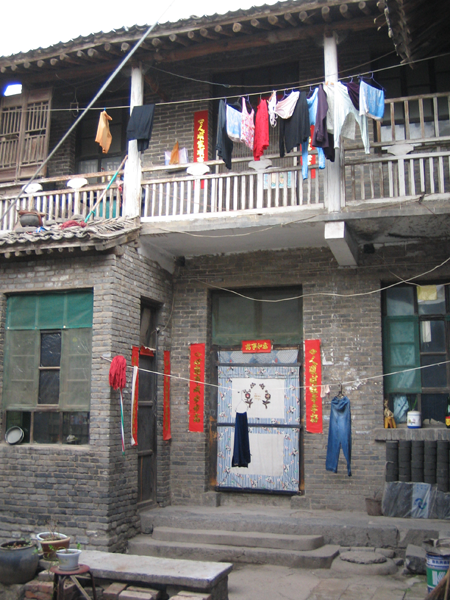
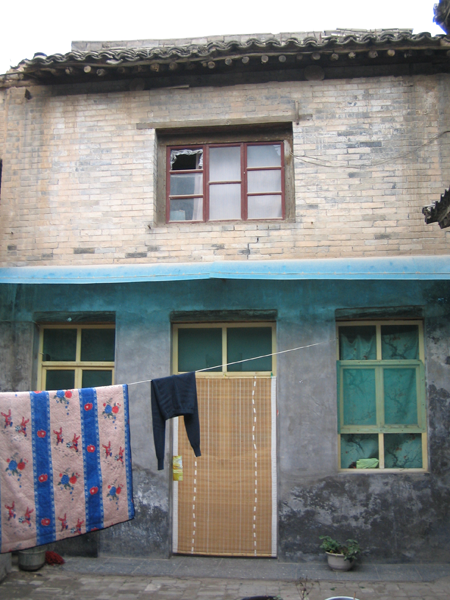
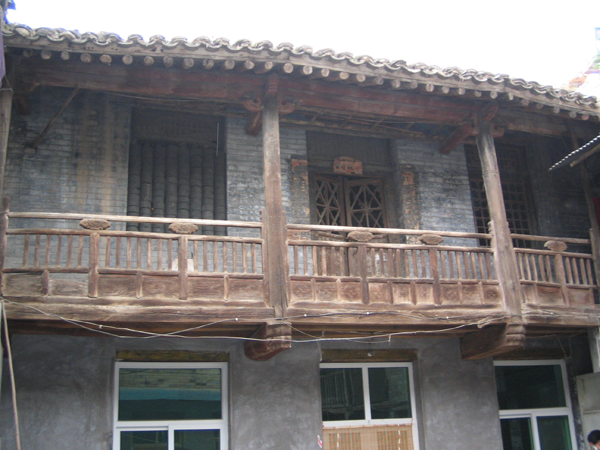
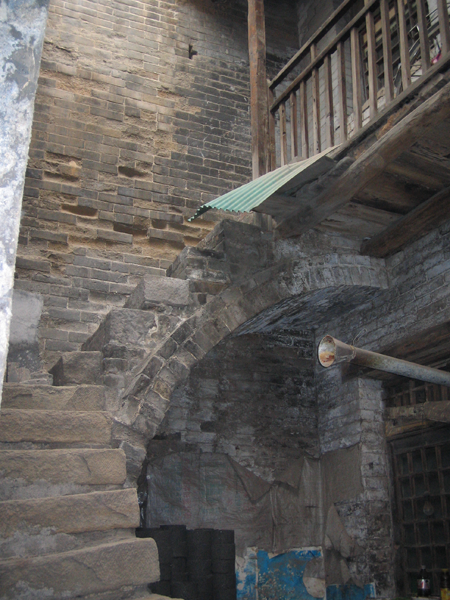
These are views of the four sides of the courtyard. Unfortunately, after seven years, it's almost impossible for me to tell their respective orientations.
So the inn was still there! I also found later that mules can still be seen in Yangcheng, although obviously not to the extent that they were in their heyday. The following is a photo of some mules and muleteers I encountered in the street.
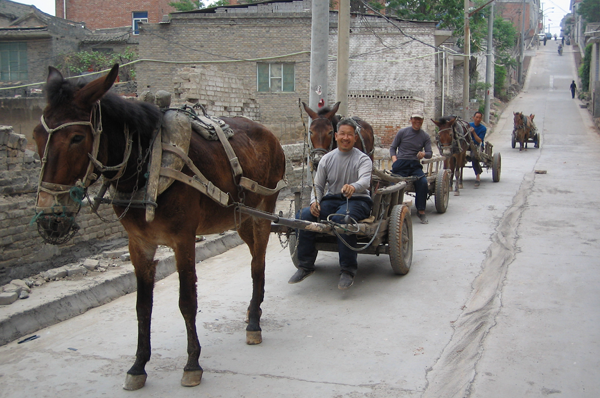
Some modern day muleteers.
As a bonus, right near the 'Inn of the Eight Happinesses' I found some old mule sheds. They were disused and were soon to be demolished and redeveloped. Inside the sheds were some old drinking troughs used for the mules.
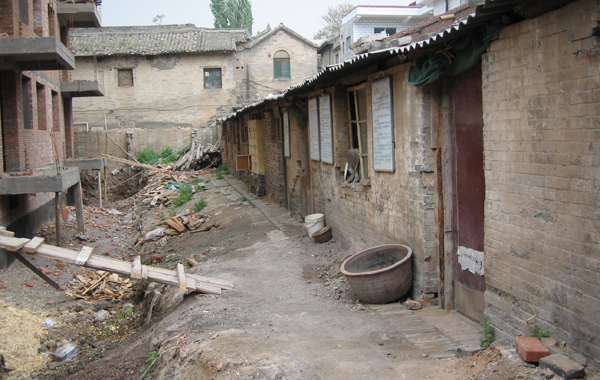
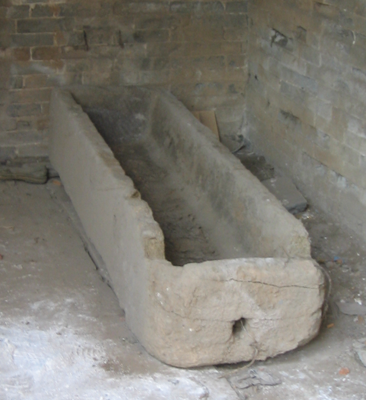
Old mule sheds near the Inn of Eight Happinesses. Some old drinking troughs were still in evidence. At the time this photo was taken in 2006, the sheds were on the verge of being demolished.
The trip was a success. Both the Inn of Eight Happinesses and some of the outlines of the old town were still visible. Probably many more mementoes of Gladys Aylward's stay in Yangcheng could be found if one looked, including the location of Bei Chai Chuang (where she hid out from the Japanese), Chowtsun (周村 zhōucūn), which can still be found on Google maps, and other spots in the town, such as the yamen.
Gladys Aylward's legacy
Despite eight years of living in Yangchang and the significant role she played in events of her time, Gladys does not appear to have left a strong legacy in the town. She left Yangcheng in 1939 to take her hundred orphans to Xi'an, later continuing to work in places such as Lanzhou and Chengdu before leaving China for Britain in 1948 or 1949.
While a naturalised Chinese citizen, her attempts to return to China ten years later were unsuccessful as the Communists were unwilling to let her come back -- perhaps for the better, as China was about to enter one of the most disastrous periods in the era of the People's Republic, the tragic Great Leap Forward and the ensuing so-called Three Years of Natural Disasters.
I was told in Yangcheng that there were still practising Christians in Yangcheng, although they worshipped in private homes. I do not know if they are descendants of people that Gladys Aylward converted or whether they came to Christianity through other paths. The old Inn of Eight Happinesses is known to local people but does not appear to be particularly noteworthy as it took people a while to help me find it.
Gladys adopted a number of orphans who went on to marry and have children. There is no publicly available information on these people, although one site (xcsclub, no longer available), referring to an article that appeared in the local newspaper on 2 September 2005, mentions that a group of foreign teachers from Zhengzhou University had managed to find the offspring of two orphans with the help of the local church.
After being refused entry to China, Gladys went to Taiwan and founded an orphanage, the Aiweide children's home (艾偉德兒童之家 ài-wěi-dé értóng zhī jiā). I have been unable to find information about this institution on the Internet.
In the West, Gladys Aylward is known to the general public through the film Inn of the Sixth Happiness. She is also well known to many Christians as a model and inspiration for what faith and determination can achieve. There have been visits to Yangcheng over the years by groups from China and abroad looking for her legacy. After my trip in 2006, I found that others had indeed been there before me, notably the group from Zhengzhou University mentioned in the 2005 article (above).
In China, largely for ideological reasons, her story has not been promoted by the State and she remains relatively unknown. In 2008, however, there appears to have been a mini-campaign to raise awareness and declare the Inn of Eight Happinesses a Yangcheng cultural relic (see this Yangcheng government site, this Baidu page on the Inn of Eight Happinesses, which features photos of the Inn from 2008, and this blog). As yet the campaign does not appear to have yielded concrete results, but according to this site (dated 24 Dec 2012), the authorities are planning to restore the Inn of Eight Happinesses.
